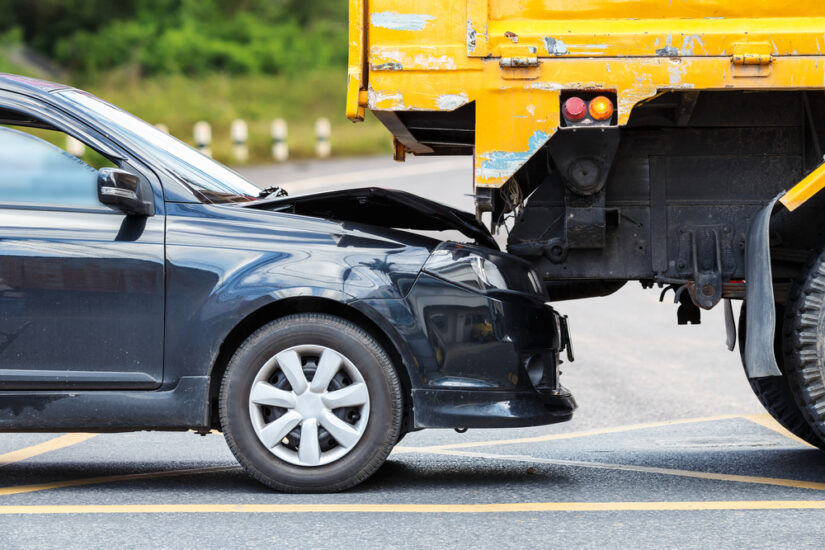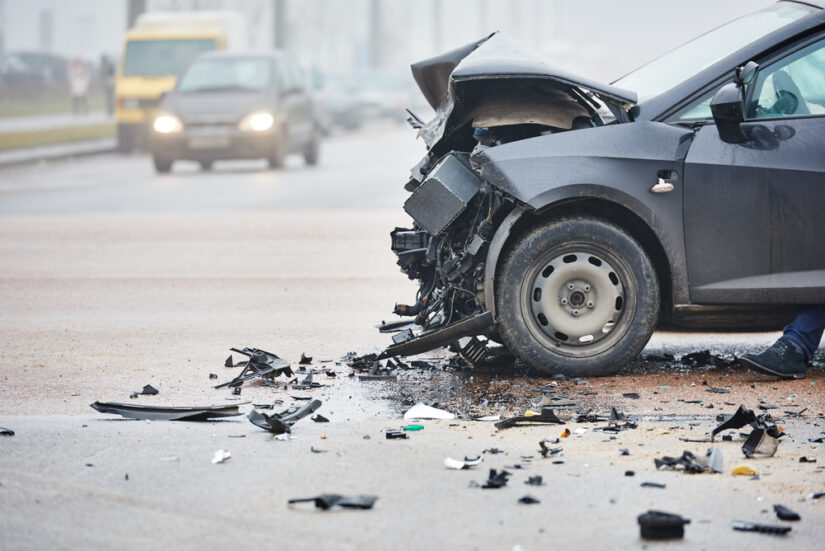April 3, 2024

If you’re involved in any kind of car accident in Texas, it helps to know a handful of state laws. They can help guide you if you end up making a car accident claim against the other driver.
If you or someone you know has suffered an injury or vehicular damage in a car accident, your medical or car repair bills can start to pile up. But if you weren’t at fault, you shouldn’t have to pick up the entire bill.
At The Napier Law Firm, we help those who have been hurt in car accidents get the compensation they need.
Keep reading to learn more.
Types of Car Accident Charges
Below is a brief recap of the four basic types of car accident charges you can face in Texas to help you gain a better understanding of each one and any potential consequences that could arise.
Reckless Driving
This is when a driver operates a vehicle with a deliberate disregard for the safety of others. It includes speeding, intentionally running red lights, or aggressive driving maneuvers.
The penalty for reckless driving can include your license getting suspended, fines, or even jail time.
Driving Under the Influence (DUI)
Texas has strict regulations regarding blood alcohol concentration (BAC) limits for driving while under the influence of alcohol or drugs. Anyone who exceeds these limits can result in penalties, such as fines, license suspension, jail time, or mandatory enrollment in an alcohol education program.
Hit and Run
A hit-and-run chag is when a driver involved in an accident doesn’t stop to fulfill their legal responsibilities, which is providing identification and insurance information to all other parties involved. Penalties for this charge range from fines to imprisonment, depending on the severity of the accident and injuries incurred.
Vehicular Manslaughter
This charge is when a driver causes the death of another person due to their reckless driving. In Texas, there are varying degrees of vehicular manslaughter charges, ranging from significant fines to license suspension to imprisonment.
What to Do after a Car Accident
Under the Texas Transportation Code section 550.026, a driver who is involved in an accident must immediately report it if there was any damage to the vehicle to the extent that it can’t be safely driven from the scene or if it resulted in the injury or death of any person.
The accident must be reported within 10 minutes of the incident ‘by the quickest means of communication.’ The fastest way is to dial 911 and they’ll connect you with either the local police department if it occurred in a municipality or the local sheriff’s office if the accident took place outside a municipality.
Drivers are also required to report a car accident to their car insurance company immediately. Even if you think the damage is minimal, they must be notified of the incident so they can begin investigating what happened and prepare for a potential lawsuit.
Keep in mind that failure to promptly notify your car insurance company may void your coverage. It may also jeopardize the company’s liability to investigate or defend a claim.
At-Fault vs. No-Fault
Texas is an ‘at-fault’ state as opposed to being a ‘no-fault’ state. With the latter, drivers are required to carry personal injury protection (PIP) insurance coverage. This is used to pay for their own accident-related damages and medical expenses, regardless of who was at fault.
On the flip side, in at-fault states like Texas, the at-fault driver is the one who’s responsible for compensating the other party, which is you in this scenario, for the damages incurred by the accident.
Even if you were partially at fault, you can still recover part of your losses. This depends on how much you’re deemed responsible. As long as you were less than 51% responsible for what happened, which is called the “modified comparative negligence” rule.
In a modified comparative negligence ruling, the total amount of compensation depends on the percentage of your accountability. For example, if it’s decided that your total damages award is $100,000 and you’re deemed 40% responsible, that means you’re entitled to only 60% of that $100,000.
This is opposed to two other types of shared fault accident charges, which aren’t used in Texas. The first is pure comparative negligence, which is similar to the modified comparative negligence rule, but with a few slight differences.
The second is called the contributory negligence rule. This type of accident claim has been criticized for being too extreme mainly because it denies the plaintiff any compensation no matter the extent of the defendant’s misconduct. So, a driver who’s even only 5% accountable can’t file a claim for damages.
Fortunately, Texas isn’t a contributory negligence state.

How to Get Compensation for Your Car Accident
Here are a few things to keep in mind when seeking compensation for your car accident in Texas.
- Gather Evidence
To recover your losses, you need to first gather evidence to prove that the other person is responsible for compensating all or part of the damages. Make sure you seek the help of an experienced car accident lawyer in Texas to help you gather the proper evidence you need to support your claim.
- Photos of damages to both vehicles and any other property
- Photos of the accident and the surrounding area
- Witness statements from other drivers or passersby who were involved in the accident or observed it
- Expert witnesses, such as first responders, medical specialists, road maintenance specialists, and others can either support the party’s allegations or refute evidence presented by the other party. This is done by providing relevant scientific, technical, or other specialized knowledge.
- Purchase a copy of the crash report from the Texas Department of Transportation
2. Statute of Limitations
In Texas, the statute of limitations on car accident lawsuits is two years from the date of the crash. So, use that time to gather the necessary evidence and talk to an experienced legal defense attorney to help you through the process.
3. File a Claim
Once you’ve decided to file the claim, you can choose to either:
- Make a third-party car insurance claim, which is filed against the at-fault driver’s insurance company
- Or, file a lawsuit against the at-fault driver in court
Talk with your lawyer about which option is better for you and your particular case.
A Final Note
Napier Law Firm is here to help you get full and fair compensation in case you were involved in a car accident. We’ll walk you through the entire process and explain the fine points of car accident charges in Texas. We can start by revising your case and your insurance policy, then lay out all your options.
Call today to schedule a free consultation.